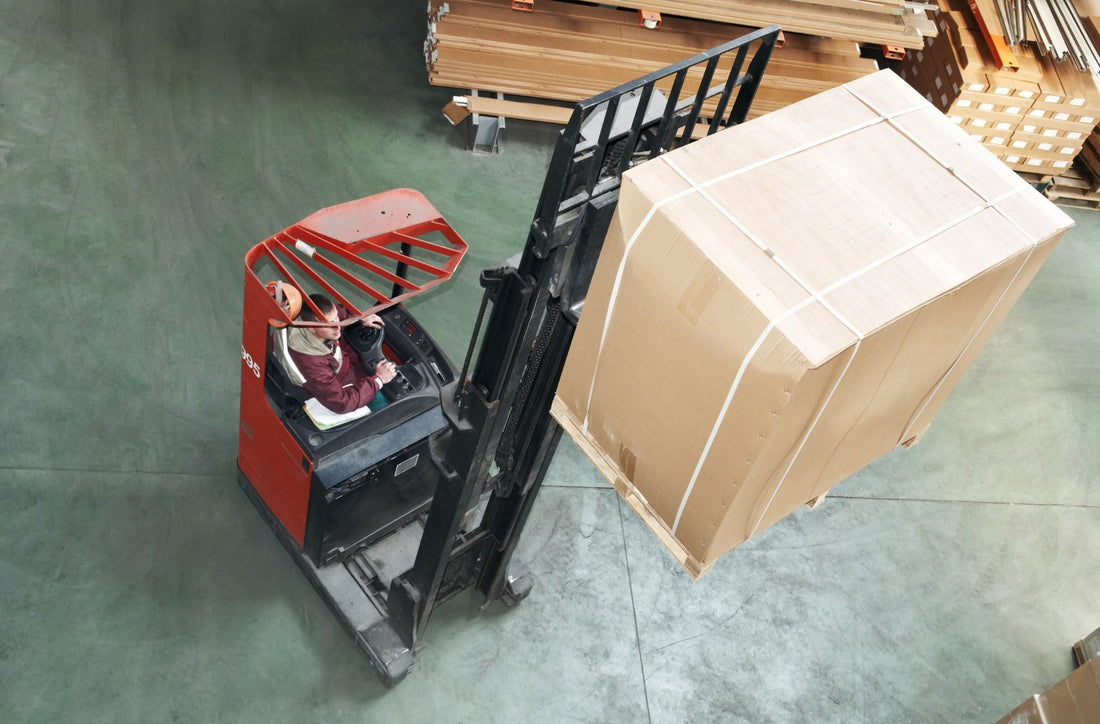
Top Safety Precautions for Operating Fully Powered Stackers
Share
Operating fully powered stackers involves more than just pushing a few buttons and driving around. Ensuring safety while using such equipment is a priority that can't be overlooked. Fully powered stackers are vital pieces of machinery that aid in moving heavy loads with ease. However, their benefits come with responsibilities to maintain a safe working environment. When safety precautions are followed diligently, they prevent accidents and enhance productivity.
The primary goal when using fully powered stackers is to protect both the operator and the equipment. Adhering to safety measures can save time and money otherwise lost in accidents and equipment repairs. Remember, a well-informed operator is the backbone of a safe work site.
Conducting Pre-Operation Inspections
Before stepping into a fully powered stacker, it's crucial to make sure everything is in perfect working order. Conducting pre-operation inspections is not just a routine task; it’s a fundamental step in ensuring safety. By checking the equipment before each use, operators can spot potential problems early and avoid costly breakdowns or dangerous situations.
Here's a handy checklist for what to inspect:
- Hydraulic Systems: Look for leaks or signs of wear and tear.
- Brakes: Ensure they are responsive and can stop the equipment safely.
- Controls: Test all controls, including steering and lifting, to make sure they function correctly.
Inspecting these components allows you to identify any irregularities. If something seems off, it's important to report it immediately to a supervisor or maintenance team. Addressing problems early can prevent minor issues from becoming major safety hazards. Taking the time to perform these checks is time well spent for everyone involved, ensuring a productive and secure workday.
Proper Training and Certification
Training is essential for anyone operating a fully powered stacker. Knowledge and skill not only increase efficiency but also prevent mishaps. Proper training arms operators with the know-how to handle equipment safely, including managing difficult maneuvers and handling loads correctly.
Operators should be fully certified to use such machinery. Certifications assure that they have passed necessary tests and are capable of operating the equipment responsibly. Alongside formal certification, ongoing training programs provide updates on any changes in safety regulations or operational techniques, making sure everyone is well-informed on the latest best practices.
For those interested in training programs, there are several resources available. Many organizations offer comprehensive courses, combining theoretical knowledge with practical skills to ensure that operators can confidently handle the machinery. Investing in proper training isn’t just a compliance measure; it’s a step toward building a safer working environment.
Safe Operating Procedures
Operating a fully powered stacker safely means following specific methods designed to prevent accidents and damage. This involves a number of practices that should be second nature to operators. When you're in control of the stacker, always maintain clear visibility of your surroundings. Being aware of pedestrians and obstacles ensures smooth navigation through the workspace.
Handling loads requires careful attention. Make sure the load is stable and evenly distributed before lifting. Never exceed the stacker's weight limits since doing so can lead to tipping or equipment failure. Remember these key steps for safe operation:
- Approach loads slowly and ensure forks are level and positioned evenly.
- Use a gradual motion when lifting or lowering loads.
- Keep loads low and tilted back for stability during transport.
Maneuvering is another crucial aspect. Always move at safe speeds, particularly when turning corners or in areas with limited visibility. By maintaining a steady pace and avoiding sudden stops or starts, you can avert unnecessary risks. Practicing controlled, smooth movements will keep both the operator and nearby workers safe.
Emergency Preparedness
Even with the best practices, emergencies can occur. That's why knowing what to do in a crisis is just as important as preventive measures. Being prepared can make all the difference in minimizing harm or damage.
If equipment malfunctions or an accident happens, having a clear emergency plan is crucial. Every operator should know how to perform an emergency shutdown, allowing them to swiftly stop the equipment if something goes wrong. Additionally, keeping emergency contact numbers easy to find ensures help can be called quickly.
For comprehensive response planning, regular drills and clear instructions should be part of the routine. Everyone in the workplace benefits when those involved are informed and ready to act swiftly if an emergency arises.
Enhancing Workplace Safety Culture
Creating a safety-conscious environment means every employee feels committed to maintaining high standards. Regular safety meetings are a fantastic opportunity to discuss potential risks and highlight the importance of following procedures. These gatherings encourage workers to speak up about concerns or challenges they've encountered.
Fostering a proactive approach toward safety also involves welcoming feedback and suggestions. Employees should feel empowered to report unsafe conditions without fear of repercussions. By building a safety-first culture, businesses not only reduce accidents but also create an atmosphere of trust and collaboration.
A well-informed team is a safe team. Whether through posters highlighting safety tips or hands-on workshops, offering continuous education will solidify the importance of safety in everyone's minds.
Safety: A Shared Responsibility
In any operational environment, safety is a shared responsibility. Fully powered stackers are powerful tools that streamline tasks and boost efficiency, but they demand respect and adherence to safety protocols. By embedding these safety strategies in everyday practice, businesses protect their most valuable assets—their people. Ultimately, when safety becomes a priority, productivity and morale naturally follow suit.
To ensure a safer and more efficient work environment, it's important to use equipment that supports smooth material handling. To help improve operations on your job site, explore SUNMAX’s selection of fully powered stackers built for dependable performance and workplace safety.
